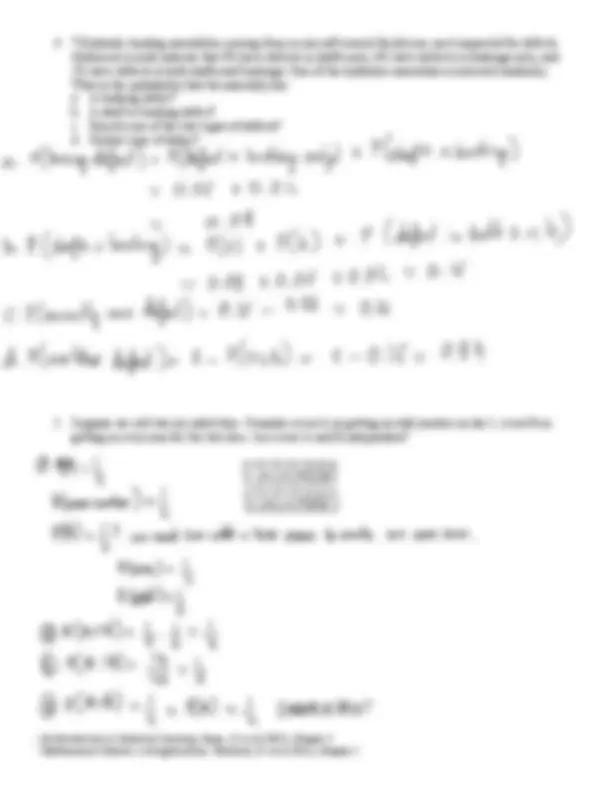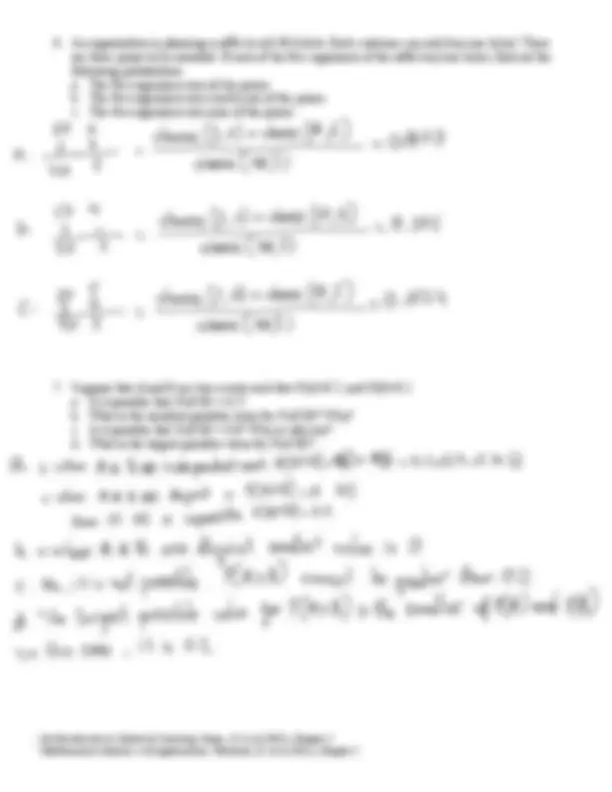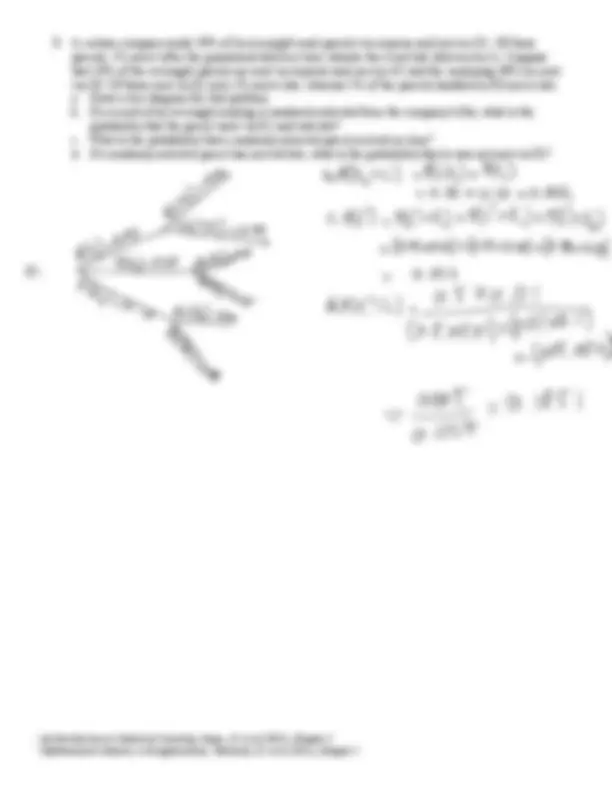





Study with the several resources on Docsity

Earn points by helping other students or get them with a premium plan


Prepare for your exams
Study with the several resources on Docsity

Earn points to download
Earn points by helping other students or get them with a premium plan
Community
Ask the community for help and clear up your study doubts
Discover the best universities in your country according to Docsity users
Free resources
Download our free guides on studying techniques, anxiety management strategies, and thesis advice from Docsity tutors
A homework assignment for the course math 3339 - spring 2024, focusing on statistical analysis and probability. The assignment includes exercises related to data analysis, probability calculations, and event analysis. The exercises cover topics such as categorical and quantitative variables, the 'boston' dataset in r, and independent events. The homework is to be submitted through canvas before the deadline.
Typology: Assignments
1 / 5

This page cannot be seen from the preview
Don't miss anything!




a An Introduction to Statistical Learning, James, G. et al (2013), Chapter 2
b
Instructions:
Homework will NOT be accepted through email or in person. Homework must be submitted through
CANVAS BEFORE the deadline.
Total possible points: 100
a
This exercise relates to the College data set, which can be found in the file College.csv. It contains a
number of variables for 777 different universities and colleges in the US. Identify the types of the
following variables.
Private : Public/private indicator
F.Undergrade : Number of full-time undergraduates
S.F.Ratio : Student/faculty ratio
b Suppose a family contains two children of different ages, and we are interested in the gender of these
children. Let F denote that a child is female and M that the child is male and let a pair such as FM
denote that the older child is female and the younger is male. There are four points in the set S of
possible observations:
Let A denote the subset of possibilities containing no males; B , the subset containing two males; and
C, the subset containing at least one male. List the elements of A , B , C , A ∩ B , A ∪ B , A ∩ C , A ∪ C,
B ∩ C , B ∪ C, and C ∩ 𝐵
Andy (^) Nguyen 2339395
Quantitative Discrete
A
FF
AND
90
β
MM
AUB
FF MM
C
Anc
0
FF FM^
MM
B
FFFM
MF BMC
MM
BUC MM
FM MF
CAB
SMF
FM
a An Introduction to Statistical Learning, James, G. et al (2013), Chapter 2
b
information about the housing values in suburbs of Boston city. First, load the “Boston” data set into
your R workspace. In Rstudio, you can click on the “Packages” tab and then on the checkbox next to
MASS. Without Rstudio, type the following command in R console:
data(Boston,package=”MASS”)
To know more information about this dataset, type the following command in R console:
?Boston
Then, answer the following questions based on the dataset, using R/Rstudio:
a. How many rows and columns in this data set?
b. How many of the suburbs in this dataset bound the Charles River? (Hint: Variable chas is a
dummy variable; chas =1 means tract bounds river, 0 otherwise) You can obtain a list of suburbs
bound the Charles River with the command:
subset(Boston,chas==1)
You can obtain a count of the suburbs bound the Charles River by
sum(Boston$chas==1)
c. What is the probability that you randomly select a suburb that bounds the Charles River?
806 rows
14
columns
35
P
suburb andcharles River
1135
a An Introduction to Statistical Learning, James, G. et al (2013), Chapter 2
b
are three prizes to be awarded. If each of the five organizers of the raffle buy one ticket, find out the
following probabilities:
a. The five organizers win all the prizes.
b. The five organizers win exactly one of the prizes.
c. The five organizers win none of the prizes.
a. Is it possible that P ( A ∩ B) = 0.1?
b. What is the smallest possible value for P ( A ∩ B)? Why?
c. Is it possible that P ( A ∩ B) = 0.8? Why or why not?
d. What is the largest possible value for P ( A ∩ B)?
a
chose.fi
fIc
b
II
cho
c
If
chose.fi
c ff1I
A
when
A Bare^
PLAN
B P A
PB 0.2 0.7 0.19^ a
A Bare
disjoint P
AAB 0
2
1 a^
P AAB^ 0.
b when A B^
are disjoint
smallest value is
O
c
No it is
notpossible^
P AAB^
cannot (^) be greater
than 0.
d
largest
possible
value
for
P ARB^ isthe
of
PCA and PB
In this
case
a An Introduction to Statistical Learning, James, G. et al (2013), Chapter 2
b
parcels, 1% arrive after the guaranteed delivery time (denote the event late delivery by L). Suppose
that 10% of the overnight parcels are sent via express mail service E2 and the remaining 40% are sent
via E3. Of those sent via E2 only 2% arrive late, whereas 5% of the parcels handled by E3 arrive late.
a. Draw a tree diagram for this problem.
b. If a record of an overnight mailing is randomly selected from the company’s file, what is the
probability that the parcel went via E2 and was late?
c. What is the probability that a randomly selected parcel arrived on time?
d. If a randomly selected parcel has arrived late, what is the probability that is was not sent via E1?
b (^) P
EML
P
P
C
P
L n (^) E P LINE
0.99 0.50 0.950.40 (^) 0. 0 I
reins
go.fi
n
foot
XO
(^0 )